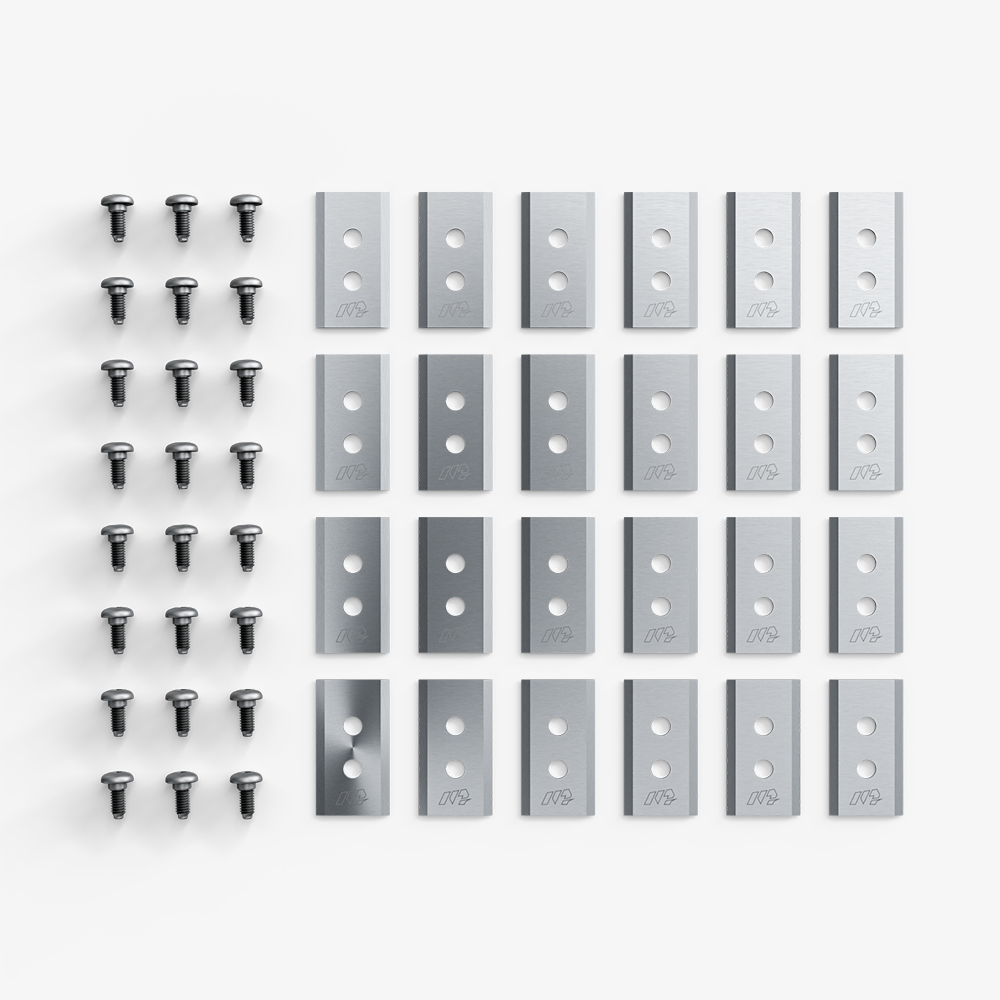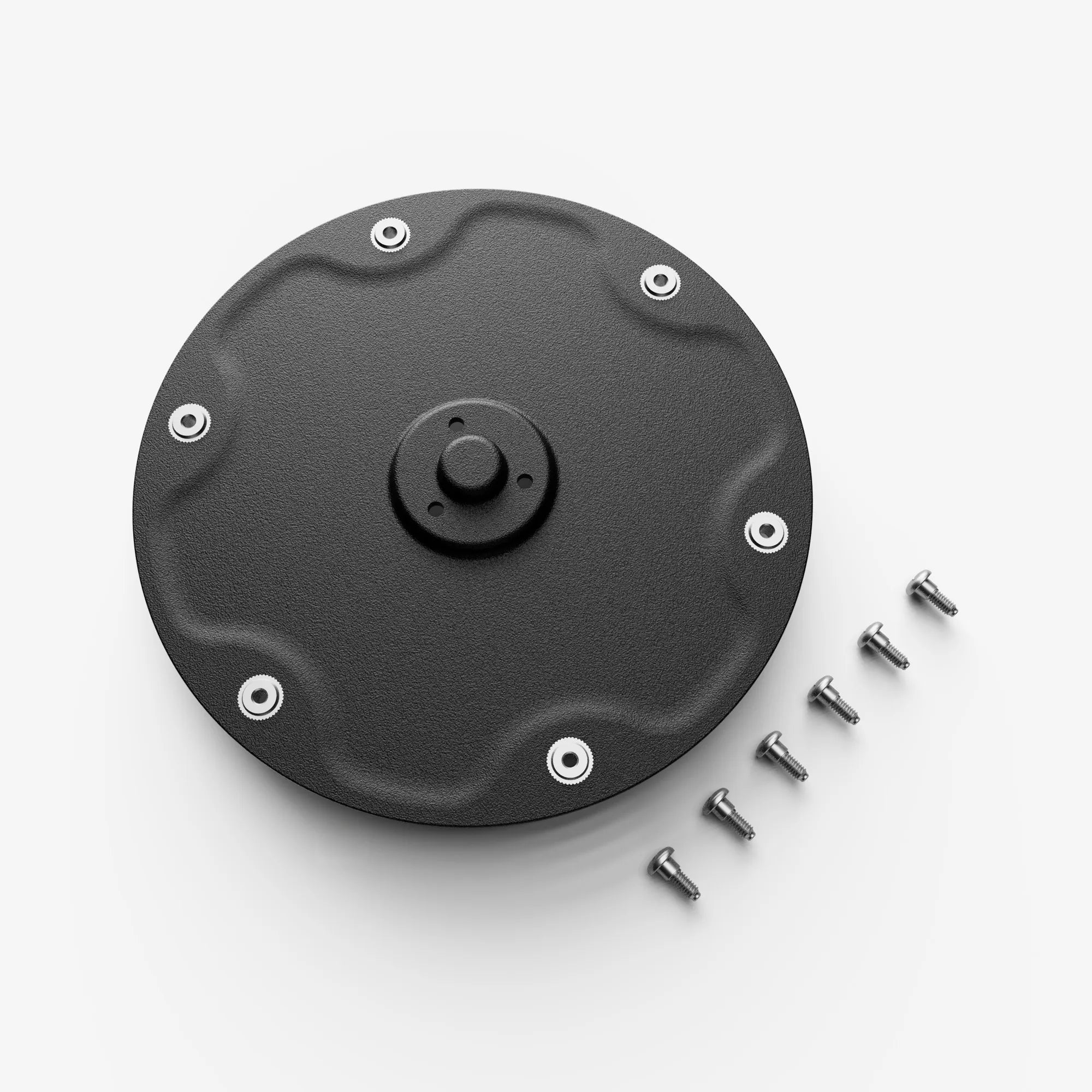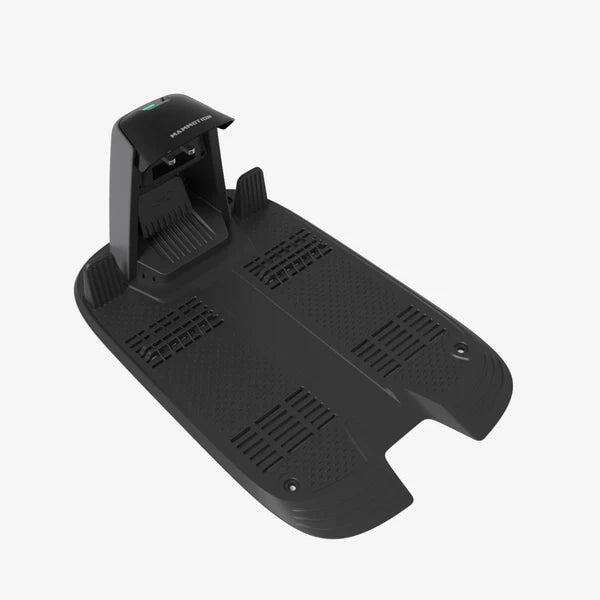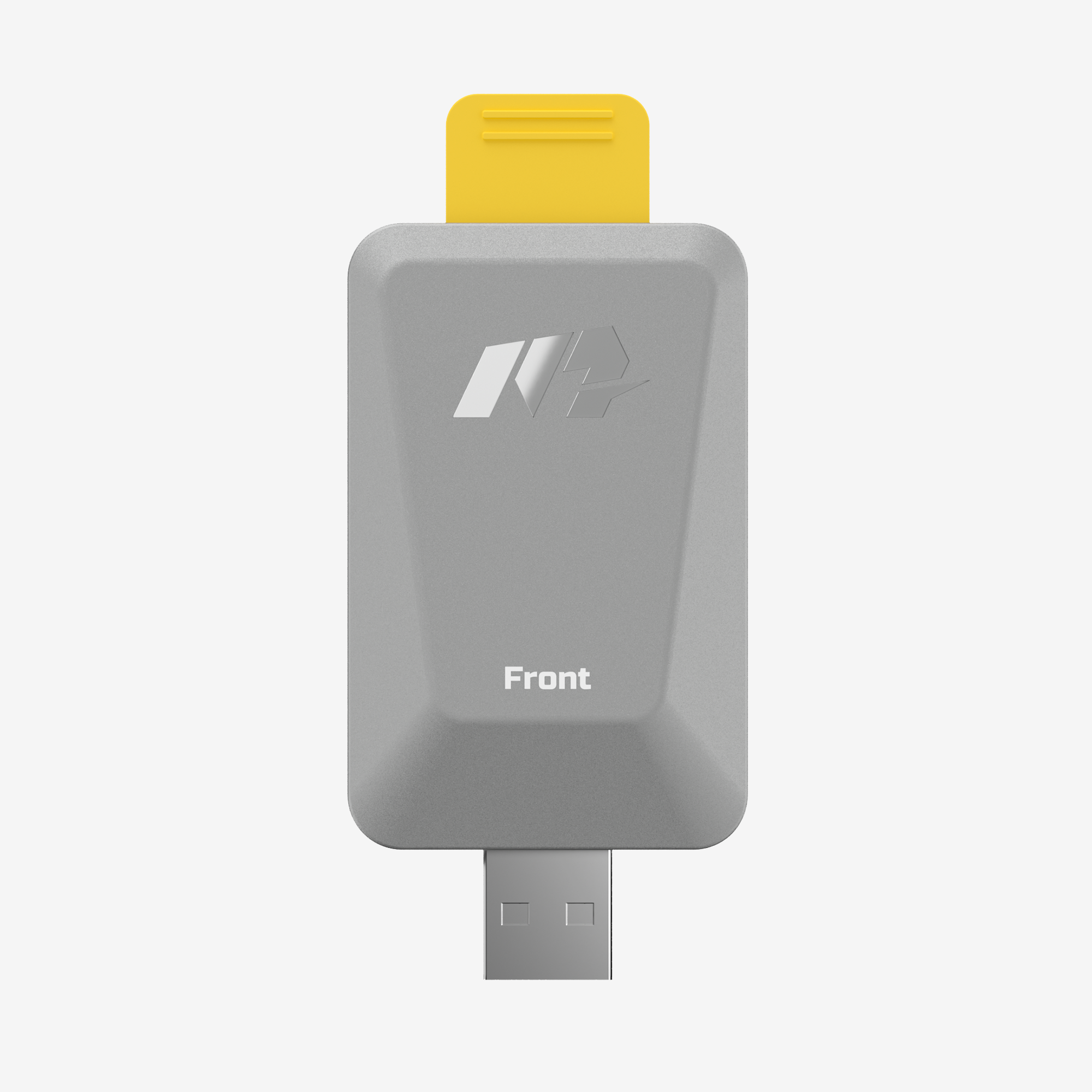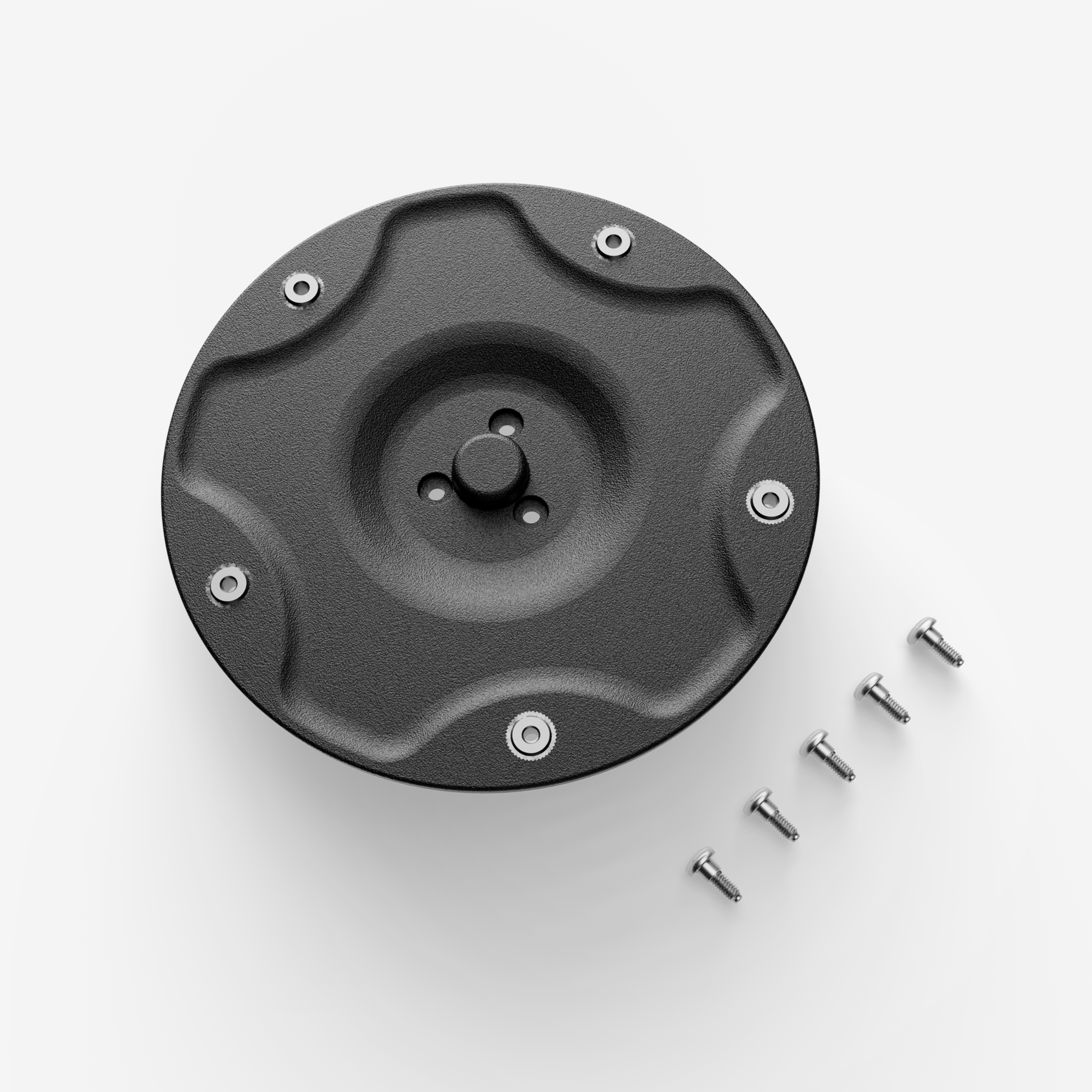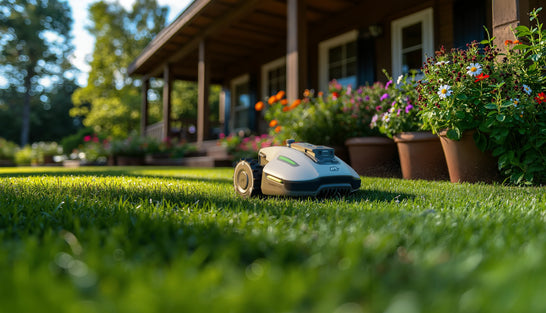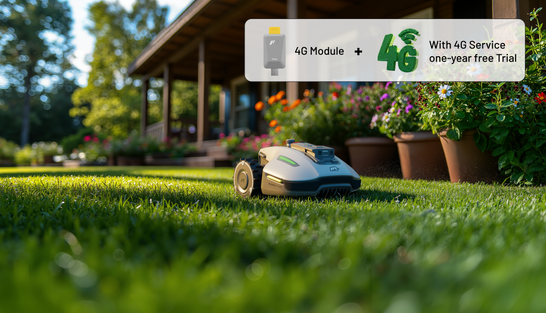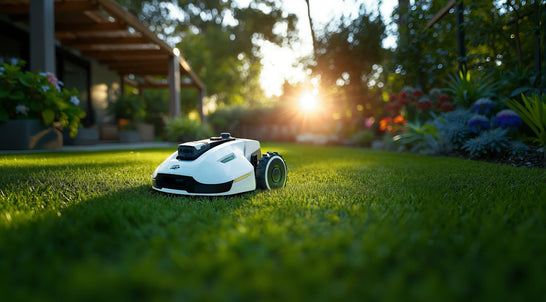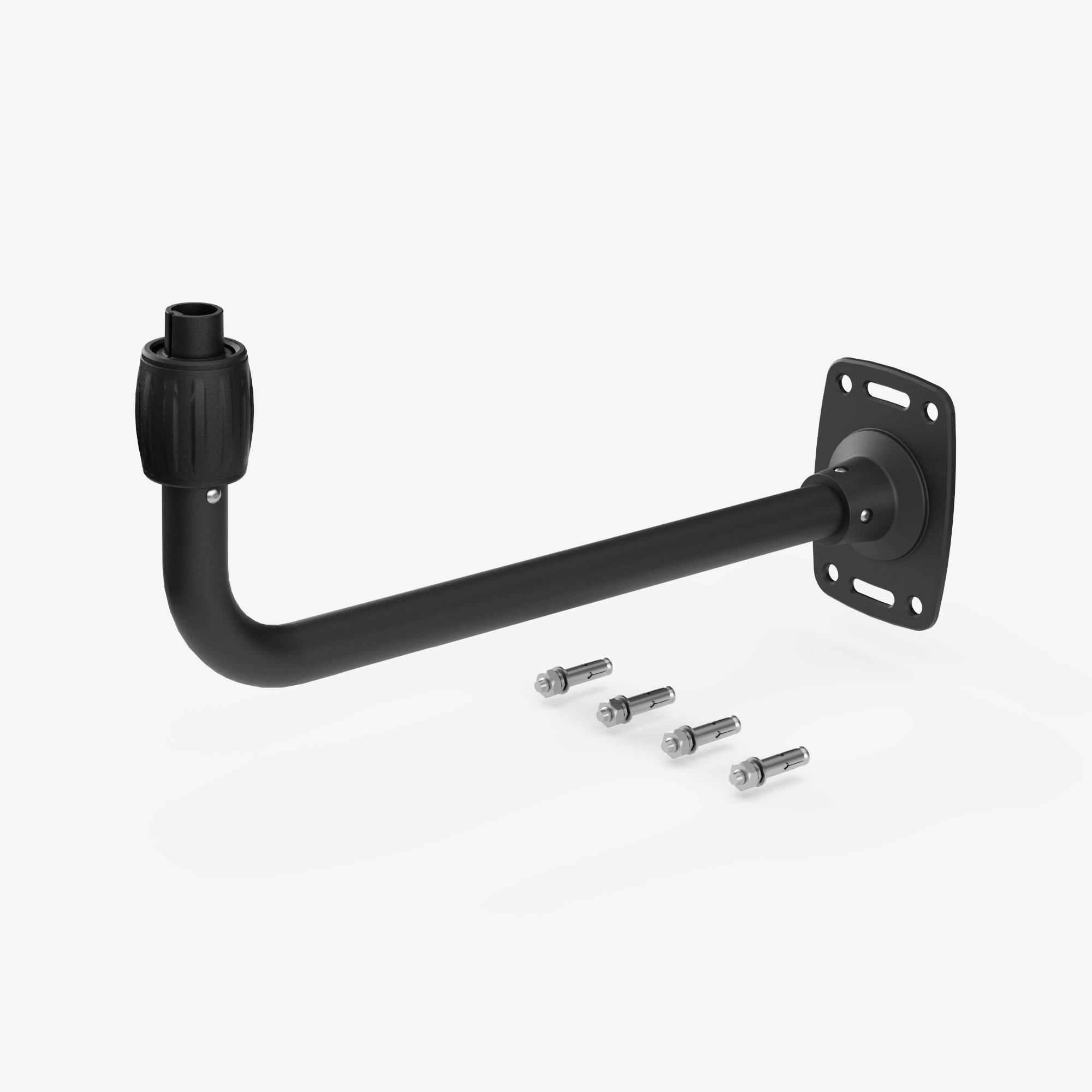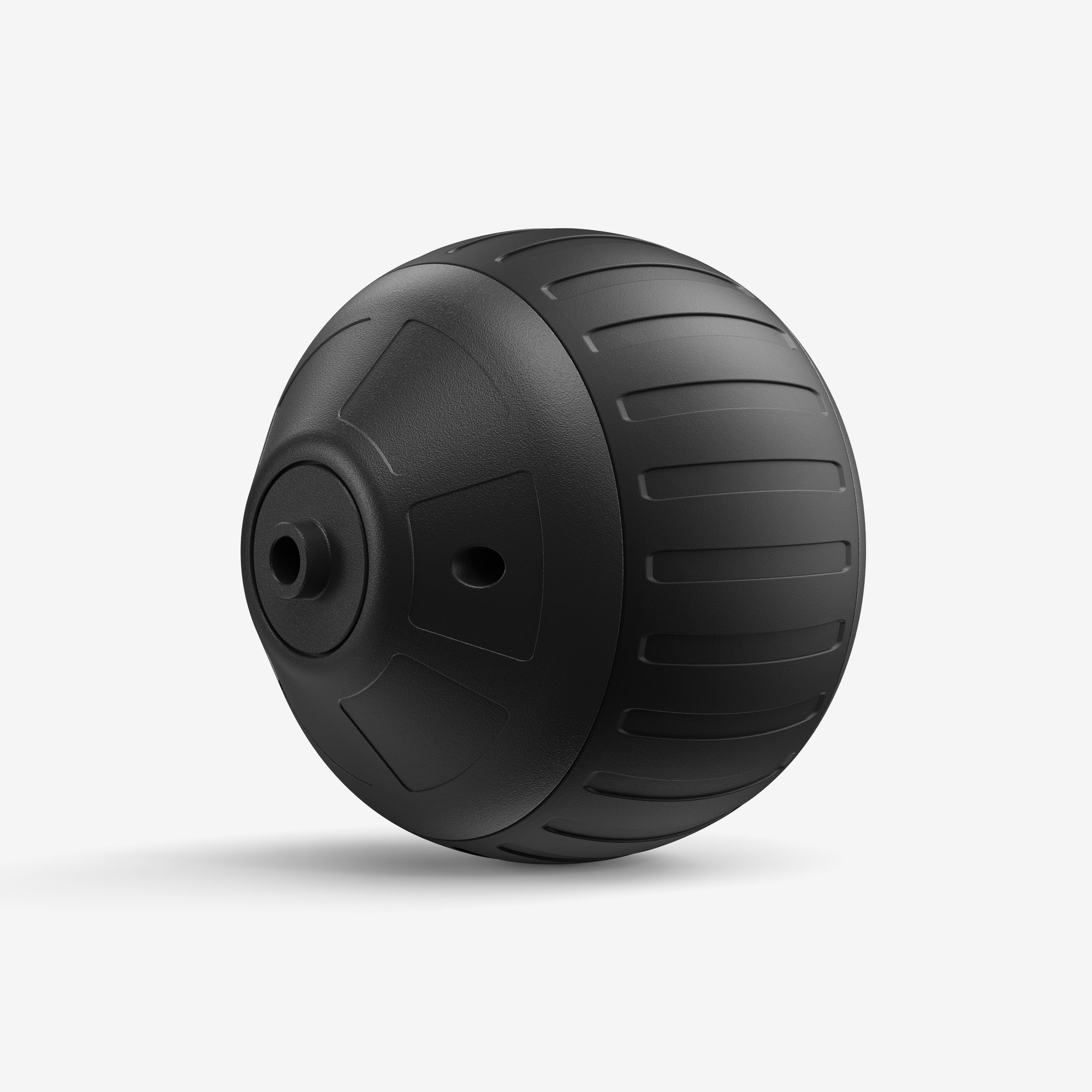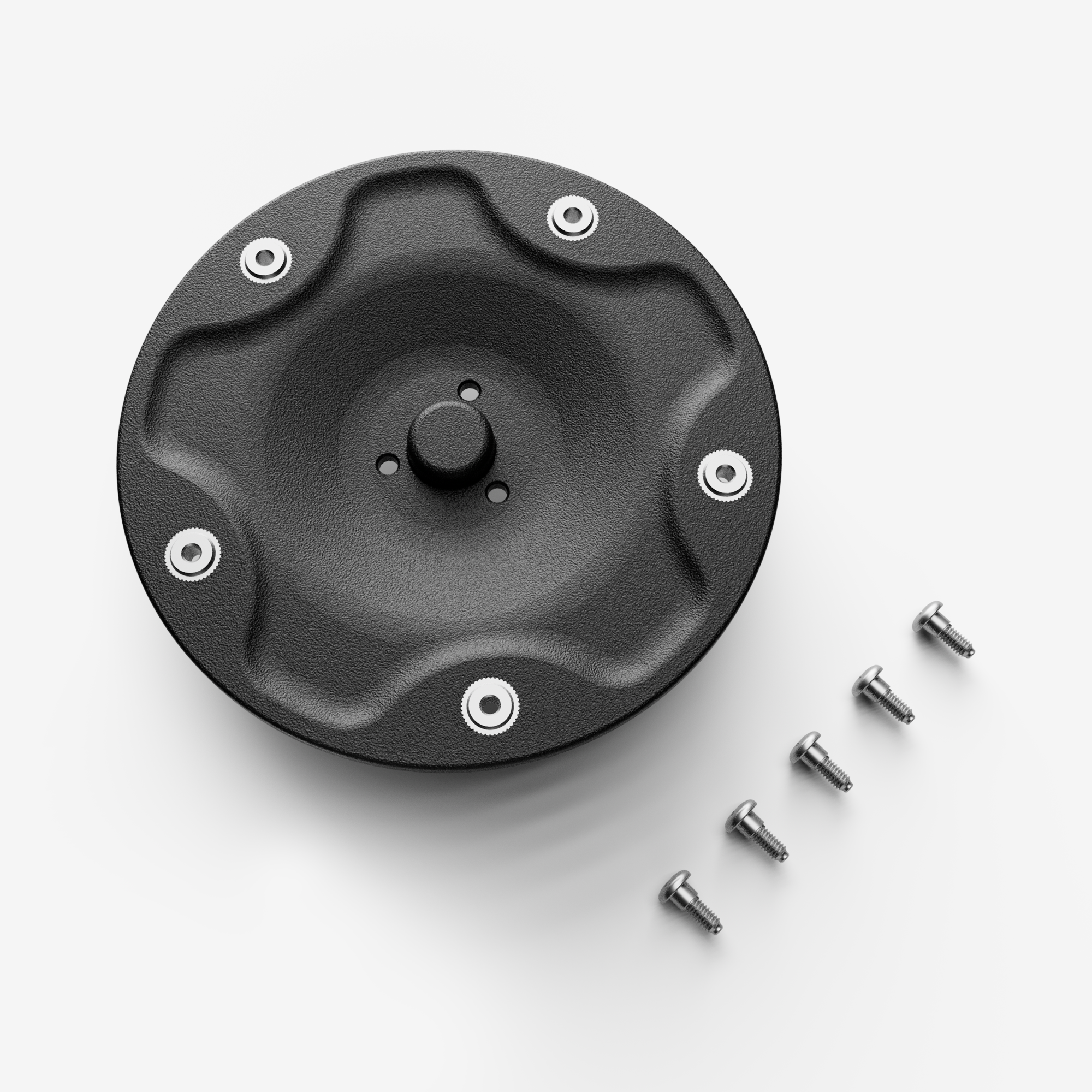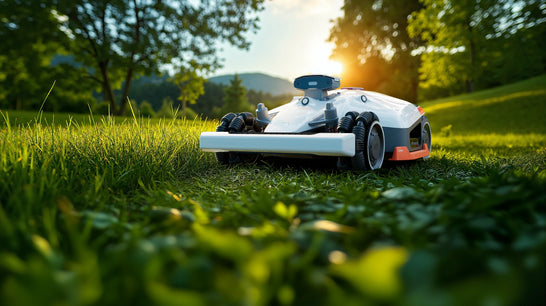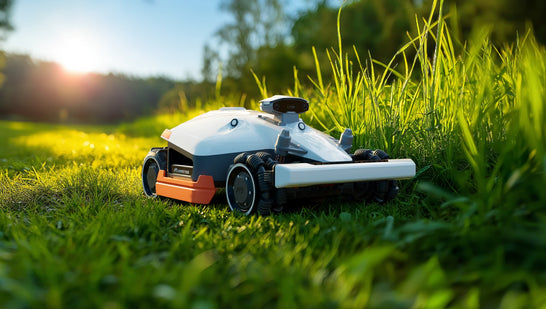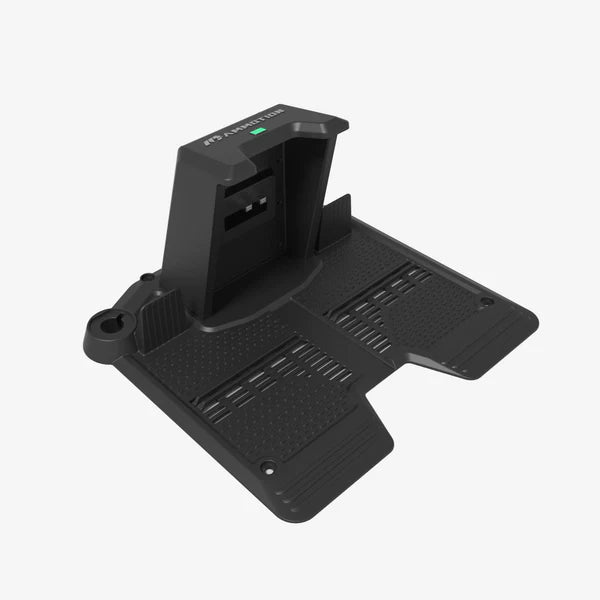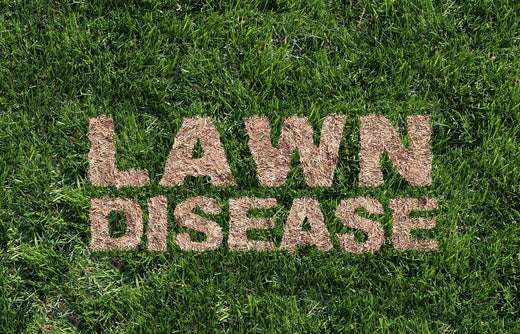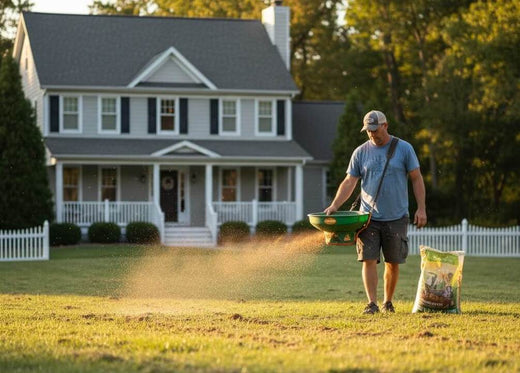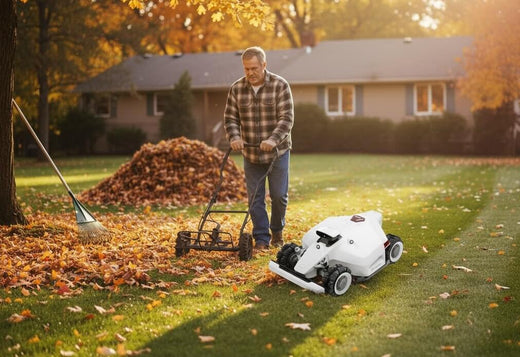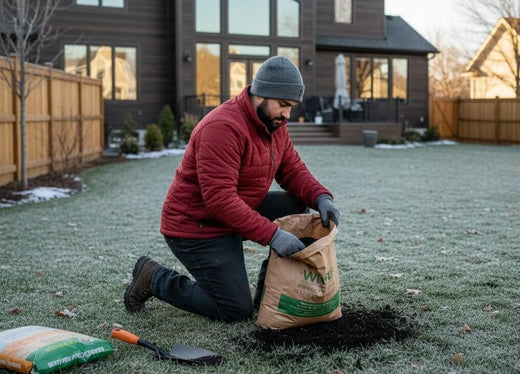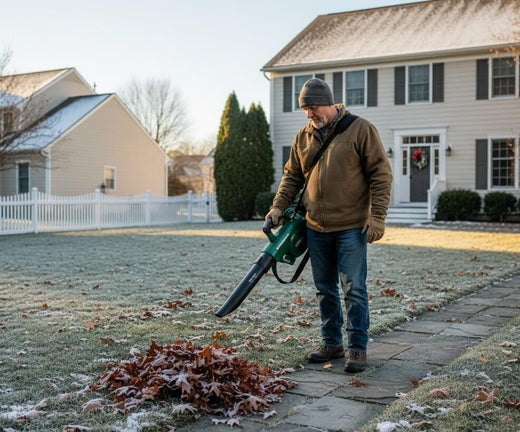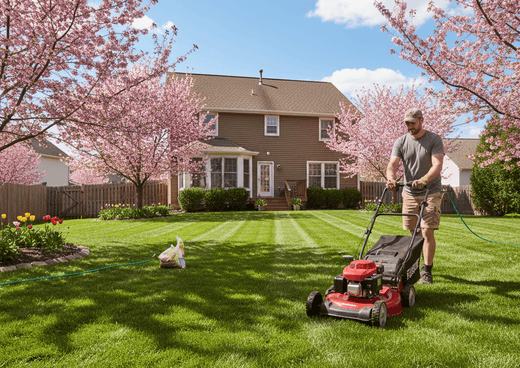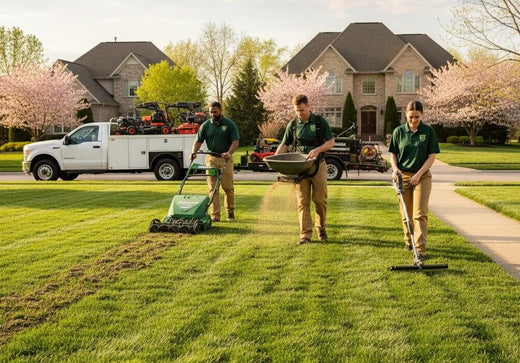For any household that takes pride in its lawn, the health of the grass not only affects aesthetics but also impacts outdoor enjoyment. However, lawns often face threats from various diseases that can lead to yellowing, patchiness, or even death of the grass. Understanding the fundamentals of lawn diseases, their causes, and their effects is crucial for lawn owners. In the following sections, we will explore common lawn diseases and their identification methods, helping users to detect and address issues early on.
Most Common Lawn Diseases and How to Identify Them
Maintaining a healthy lawn involves being vigilant about potential diseases that can compromise its beauty and vitality. Understanding the most common lawn diseases and their symptoms is essential for timely intervention. Here, we’ll discuss three prevalent lawn diseases: Brown Patch, Red Thread, and Dollar Spot. Each disease has its unique characteristics, and recognizing these early can save your lawn from extensive damage.
1. Brown Patch
Symptoms and Identification: Brown Patch is a fungal disease that primarily affects cool-season grasses, especially during periods of high humidity and warm temperatures. It manifests as circular patches of brown or tan grass, often ranging from a few inches to several feet in diameter. The affected areas may have a distinct dark brown border, and the grass blades may appear water-soaked or greasy.
Causes: This disease thrives in conditions where there is excessive moisture, whether from high humidity or overwatering. Poor air circulation and compacted soil can also contribute to its development, making it crucial for homeowners to monitor watering habits and lawn maintenance practices.
Management: To manage Brown Patch, it’s important to improve lawn drainage and aeration. Adjusting watering schedules to ensure the lawn is dry during the evening can help, as fungal growth is promoted by wet grass at night. If the disease persists, fungicidal treatments can be applied, but it's advisable to consult with a lawn care professional for the best options.
2. Red Thread

Symptoms and Identification: Red Thread is another fungal disease that is easily recognizable by its pinkish-red, thread-like structures that appear on the grass blades. This disease typically affects fine fescue and other cool-season grasses, presenting as small patches of grass that appear water-soaked or bleached.
Causes: Red Thread thrives in conditions of nitrogen deficiency, damp weather, and high humidity. Lawns that have not been fertilized adequately are particularly susceptible to this disease.
Management: The best way to combat Red Thread is to ensure proper fertilization. Applying a balanced nitrogen fertilizer can help strengthen the grass and promote healthy growth. Additionally, maintaining good lawn care practices, such as regular mowing and proper watering, can prevent the recurrence of this disease.
3. Dollar Spot
Symptoms and Identification: Dollar Spot is characterized by small, circular spots that can range from 2 to 6 inches in diameter, often giving the lawn a dollar-sized appearance. The affected grass blades may appear sunken, with a bleached or straw-colored appearance. This disease is most prevalent during warm, humid weather, particularly in the late spring and early summer.
Causes: This disease often occurs in lawns with low nitrogen levels and poor moisture management. It can also be exacerbated by improper mowing practices and excessive thatch accumulation.
Management: Managing Dollar Spot involves proper fertilization and irrigation practices. Ensuring the lawn receives adequate nitrogen can help promote healthy grass growth. Watering early in the morning and avoiding late afternoon watering can help reduce moisture levels during the evening, limiting disease spread. Regular mowing to prevent excessive thatch buildup will also help keep the lawn healthy.
Factors Contributing to Lawn Diseases
While understanding common lawn diseases is crucial, knowing the factors that contribute to their development is equally important for effective prevention and management. Various environmental, cultural, and biological elements can create conditions conducive to lawn diseases. In this section, we’ll explore these factors in detail to help homeowners take proactive measures to protect their lawns.
1. Environmental Conditions
Temperature and Humidity: Temperature and humidity play a significant role in the proliferation of lawn diseases. Many fungal diseases, such as Brown Patch and Dollar Spot, thrive in warm, humid conditions. High temperatures combined with excess moisture create an ideal environment for pathogens to flourish. Conversely, extremely dry or hot conditions can stress the grass, making it more susceptible to disease.
Soil Quality: The health of the soil is paramount for a thriving lawn. Poor soil quality—characterized by compaction, low nutrient levels, and inadequate drainage—can create stress on the grass, making it more vulnerable to diseases. Compacted soil limits root growth and water infiltration, leading to weaker grass that is less able to fend off infections.
Watering Practices: Ineffective watering practices can lead to either excessive moisture or drought stress. Overwatering can cause standing water and promote fungal growth, while insufficient watering can weaken the grass and increase susceptibility to disease. It’s essential to water deeply but infrequently to encourage robust root development while preventing waterlogging.
2. Cultural Practices
Mowing Techniques: Improper mowing techniques can create conditions that favor lawn diseases. Mowing too low can stress the grass, making it more susceptible to disease, while failing to maintain sharp mower blades can lead to ragged cuts that open the grass to infection. Additionally, allowing grass clippings to accumulate can promote thatch buildup, which can harbor pathogens.
Fertilization: The type and timing of fertilization can significantly impact lawn health. Insufficient nitrogen levels can weaken grass and lead to diseases like Red Thread. Conversely, excessive nitrogen can promote lush growth, which may become more susceptible to certain fungal infections. A balanced fertilization schedule that meets the specific needs of the grass type is essential for maintaining a healthy lawn.
Thatch Management: Thatch, a layer of organic material that accumulates between the soil surface and grass blades, can create an environment conducive to lawn diseases. Excessive thatch can retain moisture and provide a breeding ground for pathogens. Regular dethatching and aeration practices help prevent thatch buildup and promote healthy lawn growth.
3. Biological Factors
Pathogens and Pests: Various pathogens, including fungi, bacteria, and viruses, are responsible for lawn diseases. Understanding the specific pathogens that affect the local grass types can help homeowners take targeted preventive measures. Additionally, pest infestations, such as grubs or chinch bugs, can weaken grass and lead to increased vulnerability to diseases.
Grass Variety: Certain grass varieties are more resistant to diseases than others. Selecting disease-resistant grass species and cultivars can significantly reduce the risk of lawn diseases. Homeowners should consult local extension services or lawn care professionals for recommendations on the best grass types for their region.
Effective Treatment Methods for Lawn Diseases
Once lawn diseases are identified, prompt and effective treatment is essential to restore grass health and prevent further damage. This section outlines various treatment methods, from cultural practices to chemical solutions, providing lawn owners with a comprehensive approach to managing and mitigating lawn diseases.
Cultural Practices
- Improved Watering Techniques: Adjusting watering practices is one of the first steps in managing lawn diseases. Homeowners should aim to water early in the morning, allowing the grass to dry throughout the day. Deep, infrequent watering encourages deep root growth while reducing moisture on the grass blades, which can inhibit fungal growth.
- Fertilization Management: Proper fertilization is crucial for preventing and treating lawn diseases. Using a balanced fertilizer that meets the grass’s specific nutritional needs can strengthen the lawn and promote healthy growth. For instance, applying a slow-release nitrogen fertilizer can enhance resilience against diseases. Soil testing can provide insights into nutrient deficiencies, allowing homeowners to adjust their fertilization strategies accordingly.
- Mowing Practices: Mowing is more than just maintaining aesthetics; it plays a vital role in lawn health. Homeowners should ensure that mower blades are sharp to create clean cuts, which minimize stress on the grass. Additionally, setting the mower height to a higher level can encourage deeper roots and enhance the lawn’s resistance to diseases. Leaving grass clippings on the lawn can also provide nutrients and promote healthy growth.
- Thatch Control: Regular dethatching and aeration can help manage thatch buildup, improving airflow and moisture infiltration. Dethatching removes excess organic material, while aeration alleviates soil compaction, promoting healthier root systems and reducing disease susceptibility. Homeowners should consider performing these practices in the spring or fall when the grass is actively growing.
Biological Treatments
- Beneficial Microorganisms: Introducing beneficial microorganisms to the lawn can help suppress pathogens and promote healthy grass growth. Products containing mycorrhizal fungi or beneficial bacteria can enhance soil health and create a balanced ecosystem, reducing the prevalence of diseases. These treatments improve nutrient absorption and increase resilience against environmental stressors.
- Natural Fungicides: For homeowners preferring organic solutions, natural fungicides can be effective against certain lawn diseases. Products containing neem oil, baking soda, or garlic extract can help manage fungal infections. These treatments are generally less harmful to beneficial organisms and the environment, making them a suitable option for sustainable lawn care.
Chemical Treatments
- Fungicides: When cultural and biological methods are insufficient, chemical fungicides may be necessary to control lawn diseases effectively. Fungicides can be classified as preventative or curative, with preventative treatments applied before symptoms appear and curative treatments used to address existing infections. It’s essential to follow the manufacturer’s instructions and apply fungicides during favorable weather conditions to maximize effectiveness.
- Application Timing and Frequency: The timing and frequency of fungicide applications depend on the specific disease being treated and the product used. Generally, treatments should be applied at the first sign of disease, with follow-up applications as needed. Homeowners should also monitor weather conditions, as wet, humid periods can increase disease pressure, necessitating more frequent treatments.
Consulting Professionals
- Lawn Care Experts: In cases of severe infestations or when unsure of the best treatment options, consulting lawn care professionals can provide valuable insights and assistance. Experts can conduct soil tests, identify specific pathogens, and recommend tailored treatment plans to address lawn diseases effectively.
- Integrated Pest Management (IPM): Adopting an Integrated Pest Management (IPM) approach can help homeowners combine cultural, biological, and chemical methods for a comprehensive strategy against lawn diseases. This holistic approach emphasizes prevention, monitoring, and targeted interventions to maintain a healthy lawn ecosystem.
Preventive Measures to Avoid Lawn Diseases

Prevention is the most effective approach to maintaining a healthy lawn and avoiding the onset of lawn diseases. By adopting proper lawn care practices and making strategic adjustments, homeowners can create conditions that are less favorable for disease development. This section explores essential preventive measures, emphasizing long-term lawn health and resilience.
1. Maintain Proper Lawn Care Practices
Maintaining consistent and proper lawn care routines is the first step in preventing lawn diseases. These practices ensure that the grass remains healthy, thick, and less vulnerable to common lawn issues.
- Consistent Mowing: Mowing the lawn at the recommended height for your grass type helps prevent stress. Taller grass can shade the soil, reducing the chance of disease outbreaks by minimizing soil moisture. Ensure that mower blades are sharp for clean cuts, and avoid cutting more than one-third of the grass height at a time.
- Watering Deeply and Infrequently: Water the lawn deeply but less frequently to encourage deep root growth, which increases the grass's drought resistance and overall health. Watering in the early morning allows moisture to dry off throughout the day, reducing the risk of fungal growth.
- Balanced Fertilization: A balanced fertilization program tailored to the grass type helps strengthen the lawn and make it more resistant to disease. Avoid over-fertilizing, especially with nitrogen, as it can promote lush but weak growth that is more susceptible to infections.
2. Enhance Soil Health
Healthy soil is the foundation for a disease-resistant lawn. Taking steps to improve soil structure and nutrient balance can significantly reduce the likelihood of lawn diseases.
- Regular Soil Testing: Conducting soil tests every 1-2 years helps determine pH levels and nutrient deficiencies. Adjusting the pH and nutrient levels based on test results ensures that the soil environment is optimal for healthy grass growth.
- Aeration to Improve Airflow: Aerating the lawn reduces soil compaction, enhances air circulation, and allows water to penetrate deeply into the soil. This prevents the conditions that favor root rot and other moisture-related diseases.
3. Choose Disease-Resistant Grass Varieties
Selecting grass varieties that are naturally resistant to local diseases can greatly reduce the need for chemical interventions.
- Selecting Appropriate Grass Types: Homeowners should choose grass types that are well-suited to their regional climate and soil conditions. Local extension services can provide recommendations on the best grass types that are less prone to common diseases.
- Overseeding to Maintain Density: Regularly overseeding thin areas of the lawn helps maintain a dense turf, reducing the open spaces where weeds and diseases can take hold. A thick lawn is less likely to suffer from soil-borne pathogens and fungal infections.
4. Implementing Integrated Pest Management (IPM)
An Integrated Pest Management (IPM) approach helps manage lawn diseases by focusing on prevention and early intervention, reducing the need for chemicals.
- Monitoring for Early Symptoms: Regular inspection of the lawn for early signs of disease, such as discolored patches or unusual growth patterns, allows for timely intervention. Catching symptoms early can prevent the spread of diseases.
- Using Organic Controls: When necessary, using organic fungicides or biological controls can prevent diseases without harming beneficial organisms. Products like neem oil or compost tea can be effective against certain fungal infections while being environmentally friendly.
Our Conclusion
Maintaining a healthy lawn involves understanding common lawn diseases, recognizing their symptoms, and knowing how to treat them effectively. By identifying early signs like discoloration or patches, homeowners can take prompt action to protect their grass. Treating diseases involves using natural or chemical treatments based on severity, while preventive measures like proper mowing, watering, and soil management can reduce the likelihood of infections. By following these guidelines, homeowners can ensure a lush, thriving lawn that remains resilient year-round.



